
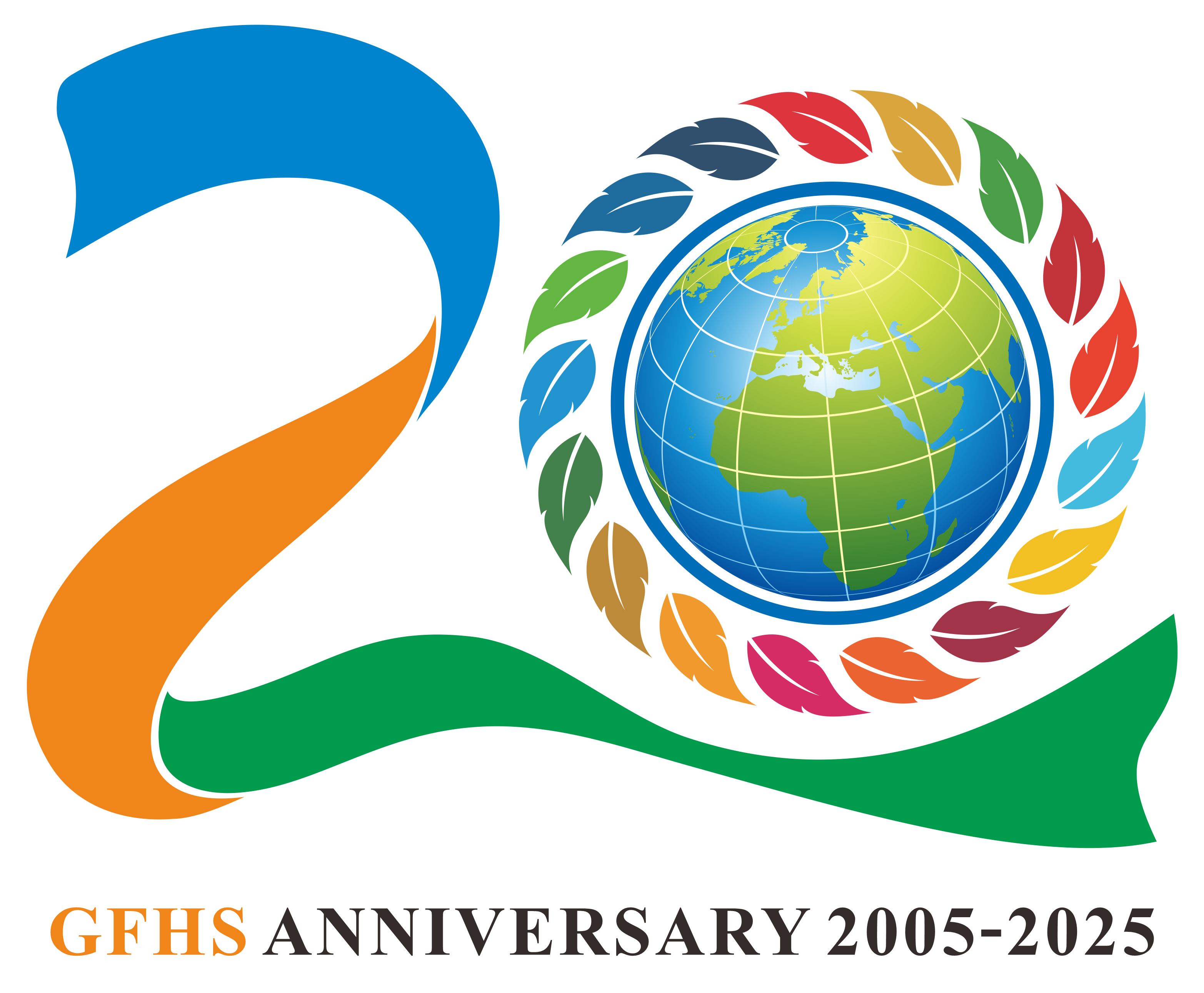

Committed to Sustainable Cities and Human Settlements for All

In Special Consultative Status with ECOSOC
—Recommendation from International Green Model City Initiative
(Lecture on China-ASEAN Countries Training Course on
Marine Information Technology
& OTGA/NMDIS/NCOSM 2021 Training Course)
Lyu Haifeng,
Secretary-General of Global Forum on Human Settlements
World Oceans Day, June 8, 2021
Thank you Professor Mao for your invitation.
Dear colleagues, ladies and gentlemen, Good Morning!
I’m very glad to join you in this training course on the occasion of the World Oceans Day 2021 focusing on life and livelihoods. My lecture title is “Trends of Post-pandemic Sustainable Urban Development and Strategies for Resilience in Coastal Cities”.
The year 2020 was an extraordinary year in human history. The whole world has been disrupted by the unprecedented COVID-19 pandemic since the beginning of the year. Once again, Mother Nature brutally retaliated against us. Without gunpowder, this world war hit every corner of the world, putting human beings under lockdown and causing heavy losses! Today, the mutating virus is still rampant in many countries. We don't know when the epidemic will end!
At the same time, we have been also facing severe crisis brought by ecological imbalance, climate change, pollution, food insecurity and other non-conventional safety challenges. Cities bore the brunt of multiple disasters. Safety has become the rarest thing in the city. This has been probably the most painful experience of mankind since last year.
The UN Secretary-General said, “Let’s be clear: human activities are at the root of our descent towards chaos.” He also called on all nations to declare a “state of climate emergency” at the Climate Ambition Summit in last December. At the One Planet Summit held this January, he also said, “2021 must be the year to reconcile humanity with nature.”
My lecture consists of 2 parts: the first part is the 5 trends of post-pandemic sustainable urban development, the second part is 6 strategies for resilience in coastal cities.
Dear colleagues,
We are in an era of unprecedentedly rapid and irreversible urbanization. According to the UN report: in 2018, 55% of the world’s population lived in cities, reaching 4.2 billion; it is estimated that by 2050, 68% of the world’s population, i.e. 7 billion people, will live in cities, with nearly 90% of the urbanization growth coming from Asia and Africa.
Cities are not only the source of resource consumption, pollution, emission and ecological degradation, but also the main battlefield of solving these problems so as to realize green recovery and transformation, and to achieve sustainable development.
2021 is
the year of green transformation and action. In my opinion, the following five
trends will be seen in the development of cities in the post-pandemic era: decoupling,
decarbonization, decentralization, digitalization and glocalization. These
five trends are often intertwined with and influenced to each other. We should
attach great importance to them and adopt corresponding strategies and methods,
so as to seize opportunities, rise to challenges and achieve our goals.

The first trend is decoupling, which means to decouple urban development from resource consumption, and build circular metabolic cities.
Cities consume three-quarters of the world’s resources. The growing population and consumption would only be satisfied by three earths’ natural resources. But modern cities often follow the one-way mode with an inflow of resources and an outflow of waste. Household waste keeps mounting while precious resources such as energy, raw materials, nutrition, water are utilized inefficiently, which leads to cities being sieged by garbage, environmental pollution, resource depletion, soil degradation, rising commodity prices and ecosystem damage. At the same time, construction land expansion has outpaced population growth. As a result, farmland, forests, wetlands, coastlines and wildlife habitats have been overly encroached on, and the risk of pandemics has increased, because 75% of the new human infectious diseases are zoonotic. Therefore, decoupling is the fundamental way to improve urban safety, health and resilience, alleviate conflicts and realize harmony between man and nature.
In the coming decades, we need to decouple the development and prosperity of urban economy from the increasing consumption of resources. By redesigning urban infrastructure, developing circular economy and organic agriculture, and implementing sustainable consumption and production, we can make resources flow in a closed loop within the city or between the city and the countryside, with the recycling of materials, nutrition and energy. Meanwhile, we should strengthen sustainable spatial planning and land use, develop compact, integrated and connected sustainable cities, contain urban sprawl, and create eco-friendly cities.
The second trend is decarbonization, that is, reducing carbon emissions, achieving carbon neutrality, and developing carbon neutral or net zero carbon cities.
The UN Secretary-General called for “flicking the ‘green switch” and “putting a price on carbon” to “achieve global carbon neutrality within the next three decades”. At present, the EU and more than 110 countries have committed themselves to carbon neutrality by 2050. China has proposed to realize this goal by 2060.
2021 also is the year of global action for carbon neutrality. Cities consume about 70% of global energy and account for about 70% GHG emissions of the world. Therefore, comprehensive urban decarbonization will be the top priority for carbon neutrality at local, national, regional and global level. Specific measures include: improving energy efficiency; building a distributed renewable energy system for a transformation to renewable energy equity; promoting green and zero energy buildings; developing green mobility; encouraging a green lifestyle and a more vegetarian diet; implementing carbon tax, boosting carbon finance and low-carbon economy; and enhancing carbon sequestration through afforestation.
The third trend is decentralization, namely, building self-sufficient cities with distributed infrastructure and a network-based economic model.
An interconnected network, just like the organic system of a bee swarm, a fish school or a neural network, is characterized by self-organization, adaptability, evolvability and strong resilience.
Green and sustainable cities should also be an organic cluster system with a distributed model, featuring greater adaptability and resilience, where resources are provided and waste is disposed of locally, and consumers are also producers. For example, buildings connected by smart grids become power stations; feces and kitchen waste are composted in the community, biogas is used for cooking, and biogas residues are used as organic fertilizer; sewage is treated nearby in the community or industrial park, water and sludge are recycled; urban agriculture develops inside and outside buildings and on balconies.
Urban spatial structures are changing from one single center to multiple centers. Megacities are connecting with surrounding cities to form a network of city clusters. Traditional large municipal parks are turning into pocket parks. More green space is available within walking distance. Community medical care will be strengthened to treat fever patients at an early stage. Large shopping malls will be replaced by more convenience stores and online shopping malls. Huge office space in traditional CBDs will be taken place by more diversified and scattered one. Working from home as well as commercial and residential integration will become more and more popular; blockchain technology will also facilitate economic and social decentralization, thus people will no longer need a “trusted” third party for regulation.
The fourth trend is digitalization, that is, developing smart cities with intelligent city and community management.
Kevin Kelly, an American writer of new economy, said that atom was the icon of the 20th century, while the Internet is that of the 21st century. Digital technology is profoundly reshaping urban planning, development and operation, and improving resource utilization and operation efficiency, which can be exemplified by: intelligent space planning based on the 3S technology (RS, GIS, GPS); intelligent construction and project management based on the BIM technology and industrialized manufacturing; smart community and smart home services based on the Internet and the IoT technology; e-commerce that’s becoming the mainstream; increasingly mature self-driving technology, intelligent water utilities and smart grids; and robotics that’s replacing human labor.
Digital technology has played an important role in the prevention and control of COVID-19, such as health code and virus transmission chain tracking. Also, online shopping (including buying vegetables online), online education, online medical care, telecommuting and virtual conferences are all flourishing with huge potential.
However, how can takeout waste be reduced? How can privacy be protected? How can teenagers get rid of video game addiction? How can necessary outdoor activities be ensured for the sake of people’s health and neighborhood vitality? How can AI be kept under control? All these are the new challenges that the digital economy is imposing on us.
The fifth trend is glocalization, which refers to the integration of universality and personality to develop cities of identity.
The pros and cons of globalization have always been the focus of debate around the world. The best practice is to localize it, making use of its advantages and avoiding its disadvantages according to the local condition and culture. However, many cities become homogeneous as a result of complete duplications. We must be confident enough to create a unique style rooted in the local culture so as to build a city that’s distinctive in both the spirit and the architectural landscape. “Identity” is one of the six basic principles of the IGMC Standard. A city without identity is unappealing to talents, and those who abandon their local culture can hardly find their ego and happiness.
Indigenous people around the world have many clever ways that have stood the test of history to live in harmony with nature, such as grow food and build architectures. The UN Secretary-General stressed that “indigenous knowledge, distilled over millennia of close and direct contact with nature, can help to point the way.”
Before the 1980s, traditional circular economy in China’s rural areas was very successful. For example, the Mulberry-dyke & Fish-pond model in the Pearl River Delta fully recycled nutrients without any waste to produce safe and tasty food. In terms of architecture, Zhuge Village in Lanxi city, Zhejiang Province, China, enjoys geographical advantages and preserves rows of ancient buildings intact. With about 600 years of history, the buildings can still be used for farming, teaching, living and working. In contrast, modern reinforced concrete buildings usually have a depreciation life of just about 60 years. This issue is worth pondering.
The above five trends of urban transformation and development reflect the logic and rules of nature. The way of nature, seemingly common, is actually profound. The network and AI are learning the inherent logic of nature, such as the organic system of bee swarms, to evolve towards a new type of biological civilization. Nature is always our best teacher.
Those five trends can be found in the concepts and standards of International Green Model City (IGMC) Initiative. Launched by the Global Forum on Human Settlements collaborated with UNEP and related International organizations as well as governments in 2011 at UN headquarters, the IGMC Initiative is a partnership initiative of Sustainable Development Goal 11, based on the principles of “safety, sustainability, equity, identity, prosperity and happiness”, and is a global action plan for building “zero waste and zero emission” oriented green cities, with the aim of promoting the implementation of the 2030 Agenda for Sustainable Development, the New Urban Agenda and the Paris Climate Agreement. At present, 41 well known cities and businesses in the world have joined the Initiative, forming a network for exchanges, sharing, interaction and cooperation.
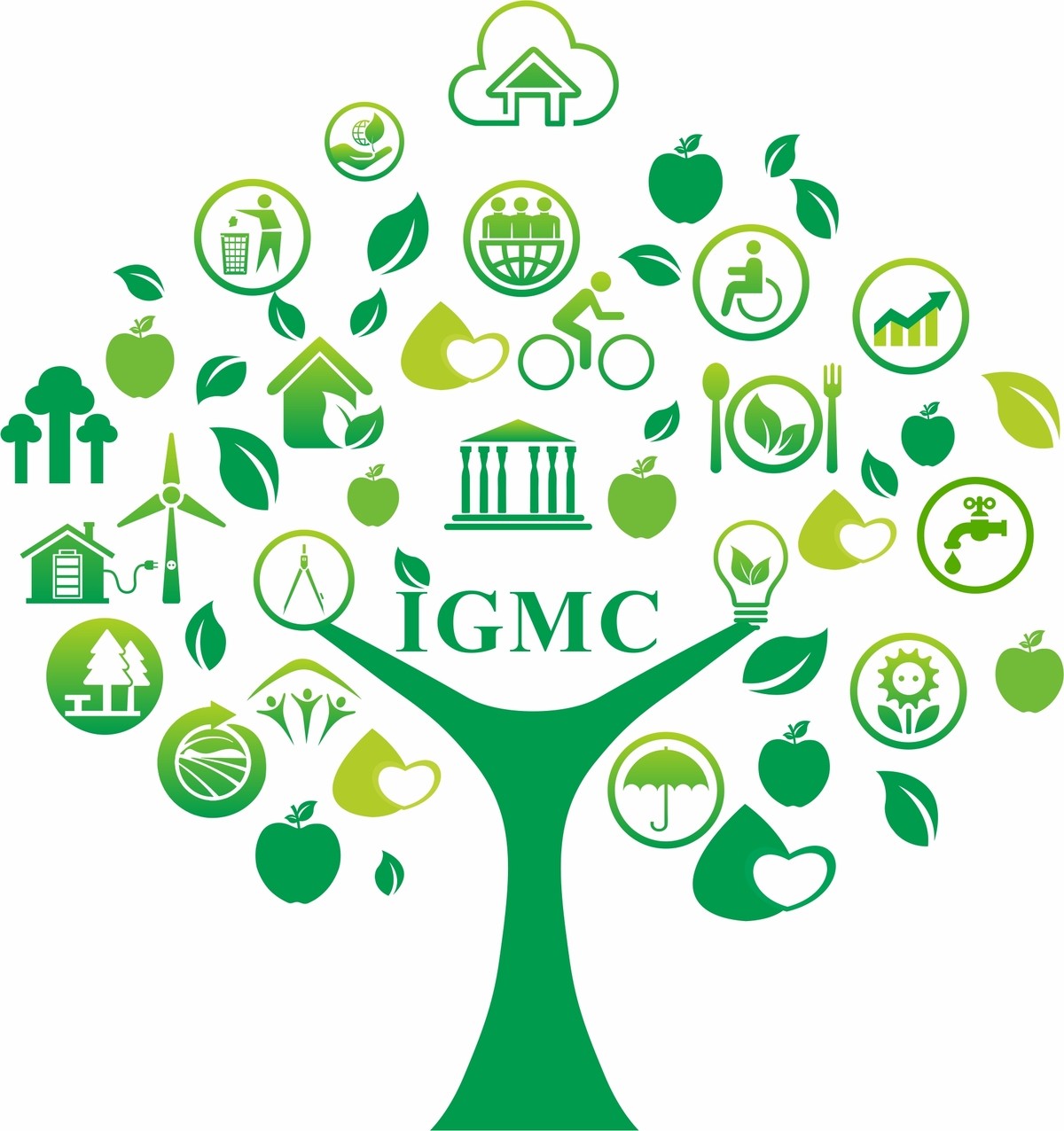
In light of the IGMC concept, greener cities resemble trees.
Let’s
move on to the second part of my lecture. I would share the strategies for
resilience in coastal cities combined with the IGMC Initiative and Standards. I
have shared similar contents in International Leadership Conference towards
achieving SDG 14 held by IOI in Hong Kong in 2017.
Vulnerable Coastal Cites
and Human Settlements
Coastal zones cover 20 percent of the earth space, where more than 45 percent of population live and work. By 2025, about 75 percent of the world’s population could be living within 100 km of its coast. By the end of this century, 130 million people live within one meter of sea level.
Coastal cities are heavily vulnerable to natural disaster and are affected by rising sea levels led by climate change, ecological degradation, inland floods, more frequent and stronger storms, and periods of more extreme heat and cold. Nearly 80 per cent of disasters caused by natural hazards are weather or climate related. These hazards are likely to change in frequency, intensity, geographic range and duration as a result of projected changes in climate.
Let’s quote several miserable stories occurred in Asian coastal cities in the new century. The first is Indian Ocean Tsunami. In December 2004, the undersea megathrust earthquake triggered a series of devastating tsunamis along the coasts of most landmasses bordering the Indian Ocean, killing about 250,000 people in 14 countries. It was one of the deadliest natural disasters in recorded history.
The Second is the Fukushima Daiichi Nuclear Disaster occurred in March 2011. It was the most significant nuclear incident since 1986 the Chernobyl disaster. Nowadays Japanese government declared that they will discharge polluted water by the leaking nuclear reactor into Pacific Ocean. It is really unacceptable by international community. Its adverse influence will last for many years.
I still remember that the horrifying super typhoon Mangkhut slammed into Philippines and China in 2018, destroying nearly 20,000 trees in Shenzhen city one day and forcing people to confine themselves indoors, who were helpless in front of the severe rainstorm.
What’s worse, eight million tons of plastic is dumped into the ocean each year and has reached the Mariana Trench, the deepest spot on Earth. The tiny plastic particles were sucked up by marine creatures and were also found in human intestines, stomach and excreta. Just like PM 2.5, they can be absorbed into our blood and even cells, which is incurable at present.
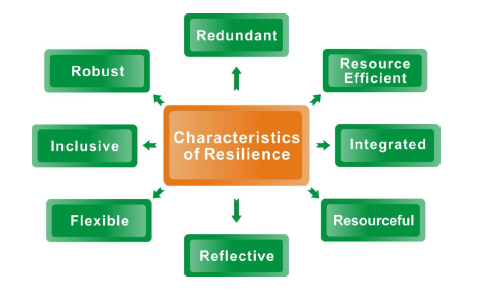
Resilience
“Resilience is the capacity of individuals, communities, and ecosystems to prevent, absorb, accommodate and recover from a range of shocks and stresses which may be physical, social, or economic. A resilient system can continually survive, adapt and grow in the face of challenges and disturbances, which may be discrete and temporary, such as a natural disaster, or continue over a longer period, such as a shift in climate conditions or availability of key resources.” [UNEP and The Rockefeller Foundation, Urban Environmental Sustainability and Resilience, The New Urban Agenda].
Local governments should adopt and implement local disaster risk reduction strategies in line with the Sendai Framework for Disaster Risk Reduction 2015-2030.
I would like to share recommendations from IGMC initiative and standards on how to make coastal cities and human settlements resilient—6 key Strategies are as below:
1. Building low-carbon cities to tackle climate change
As I mentioned in the
first part, the trend of decarbonization. In view of
this, increasing the energy efficiency, developing renewable energy and
building low-carbon coastal cities are the decisive way. A “Net Zero Carbon City” embodies
the trend whereby cities attempt to systemically lower carbon emissions through
energy efficient planning, design, construction, operation and maintenance with
the strategic deployment of renewable energies as a primary source of electric
power and attempts to achieve overall carbon neutrality by means of carbon sequestration or offsets. Developing an over-arching Net Zero Carbon action plan and targets
that are in line with IGMC principles and categories can facilitate a net
carbon-neutral development by systematically addressing demand and supply
issues. Many pioneer coastal cities have already put forward the
objective of carbon neutrality, including Copenhagen, Malmo, Masdar, Vancouver,
Cape Town and Accra, among others. Some of them have participated in IGMC
Initiative.
2. Ensuring adaptable urban planning and design to natural disaster risks
This includes: (1) taking sustainable location, avoiding development in zones or sites with risks of flooding, landslides and other natural disasters; (2) adopting Sustainable Spatial Planning and Design (see Category 1.1 of IGMC Standards). The compact city model and Transit-Oriented Development strategy contribute to accessibility, safety and resilience. This also includes bioclimatic design, etc. (3) Elevating the foundation of the buildings and relevant infrastructures to cope with potential sea level rise in future.
One good example is
HafenCity in Hamburg, Germany. Flood protection was, and remains, an important
precondition for building HafenCity. There was a conscious decision not to
surround it with dikes. Instead, new buildings and streets are built on
elevated mounds at a new level of 8-9 metres above mean sea level, protecting
the development from floods. They also offer space inside for flood-secure
parking garages. In contrast, promenades and certain squares remain at the area’s
previous elevation of about 4.5 to 5.5 metres above sea level, which
attractively preserves their close links to the water and allows creation of
useful public spaces of high quality.
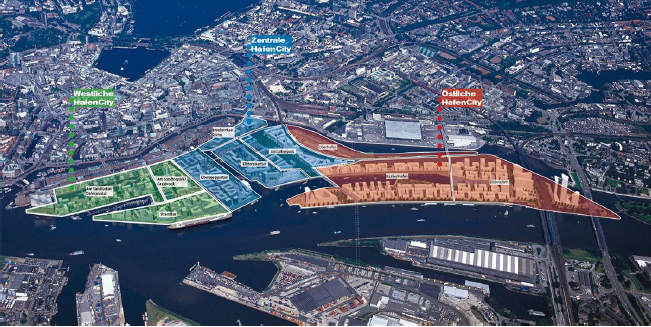
New
buildings and streets are built on elevated mounds at a new level of 8-9 m
above mean sea level in HafenCity,
Hamburg, Germany
Two architects who have won the “Global Human Settlements Outstanding Contribution Award” have set a successful example for the bioclimatic design: Mr. Mick Pierce, a master of Bionics from Zimbabwe, who advocates “Building adaptable city through adaptable architectural structure. Architectural form follows process in nature”. He designed bionic buildings such as the East Gate Building in Harare after being inspired by the nest of termites and cactus.
[The ventilation facilities in the Eastgate are used to remove the accumulated heat of the building complex. Its design is derived from the termite mound ventilation channels and chimneys. The cold air at night cools the heat-absorbing masonry of the building. The zigzag concrete panels dotted with green plants absorb the least heat during the day and release the most heat at night, that is derived from cactus]
Mr. Kenneth King Mun Yeang, who emphasizes that a built environment must be an artificial ecosystem, designed Suasana PJH in Malaysia and other ecological buildings by imitating and copying the features of the natural ecosystem.
[Suasana PJH is a
mixed commercial development with GreenBuilding Index (GBI) Silver Rating. It
was designed to consider contribution to the local ecosystem with ecological nexus,
green balconies and an “eco-cell” with continuous vegetation for biodiversity
enhancements through the use of locals’ native species—A State-of-Art and
Sustainability Approach—to select native faunal species to be brought back to
locality: for feeding, breeding, refugee from prey.]
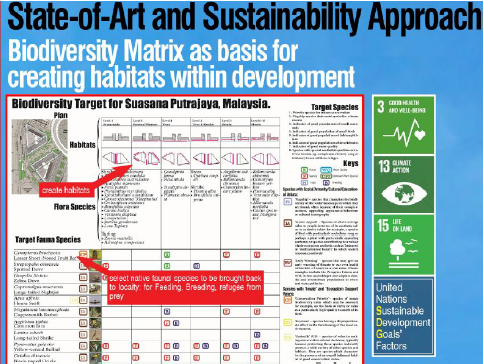
A
State-of-Art and Sustainability Approach—to select native faunal species to be
brought back to locality:
for feeding, breeding, refugee from prey. Suasana PJH
in Malaysia.
3. Building in redundancy and flexibility through distributed infrastructure networks
This may mean creating distributed infrastructure networks and multiple sources for food, water, goods and public services. As I mentioned in the first part that “the trend of decentralization for building self-sufficient cities”. Distributed infrastructure are more resilient than centralized infrastructure, such as distributed drinking water plant, sewage treatment plant, community-based renewable power station, automatic backup data system with good redundancy and fault tolerance, etc. Physical and spatial attributes of the landscape can enhance capacity for adaptation, for example the creation of a network of diverse spatial types, including adequate safe and usable open space and shelter as a locus for communities to recover. A well-connected road network similar to the leaf vein network, which can reach the same point in various ways, is very conducive to urgent disaster relief. Creation of self-sufficient units at the local, neighbourhood, city and regional scales enhances flexibility and redundancy and therefore resilience.
4. Improving urban infrastructure quality for resilience
Infrastructure
investments need to be reliable, and take into account future demand and
potential shocks and stresses. This includes: (1) Designing green
infrastructure for resilience. Green infrastructure is a cost-effective,
resilient approach to manage wet weather impacts that reduces and treats storm
water at its source while delivering environmental, social, and economic benefits.
The type of green infrastructure includes urban forest, green roofs, constructed
wetlands, permeable pavements, Rain gardens and planter boxes, biowales, etc. (2) Enforcing
seismic and disaster design of all infrastructures and
buildings to meet the requirements of the respective national
standards.
(3) Underground pipe network of urban supply and drainage
system, electric power, communication etc. should be built under overall
planning and with high standard.
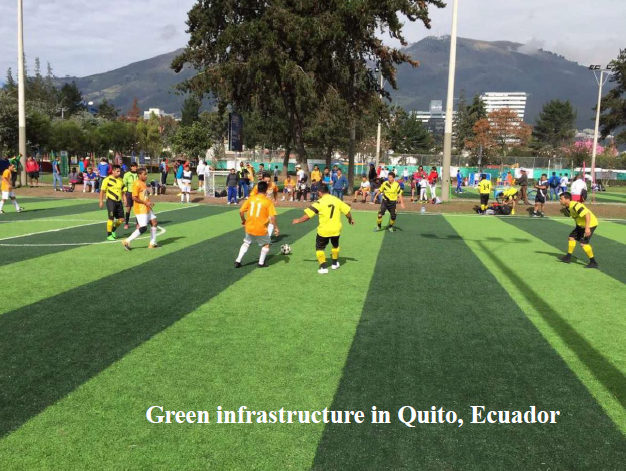
This includes: (1)reinforcing disaster prediction and forecasting, combined with the use of information and communication technologies; (2) preparing effective backup supply, such as power, drinking water, rescue and relief supplies, special vehicles and equipments; (3) establishing a city disaster management centre to coordinate all command and emergency management in order to take measures decisively and on a timely basis; (4) improving community self-help and mutual-help networks and capacities; and (5) launching technology information exchanges and personnel training, and practicing disaster drills.
6. paying close attention to vulnerable groups
Those vulnerable groups are often more severely affected by disasters, and the slums and informal settlements they live in are often hit hardest. The spread of COVID-19 in many countries has also approved this point. It is important to pay close attention to vulnerable groups and upgrade accordingly the unsafe slums and informal human settlements if needed.
8 Key Indicators of IGMC Standards 3.0 for Resilience
•Established a disaster prediction and emergency response system including the urban disaster management center.
•Sufficient emergency supplies, notably reliable provision of water and power.
•Percentage of infrastructure and buildings with seismic and disaster prevention design and construction and up to national standards is 100 %
•Area of emergency shelter per capita is ≥6 m2
•Control rate of annual runoff is ≥70 %
•Number of criminal cases per 10,000 people per year is ≤15
•Number of doctors per 10,000 people is ≥30
•Number of hospital beds per 10,000 people is ≥50
Let me conclude: against the complex backdrop of pandemic normalization and climate change, we need to study the logic and rules of nature, and conform to the trends of urban development, rethink, re-evaluate, re-design and reshape our cities, in line with strategies, methodologies and indicators of 2030 Sustainable Development Agenda, New Urban Agenda and IGMC Initiative and Standards, to accelerate green transformation and innovation for healthy, resilient, carbon neutral and greener cities, especially greener coastal cities. By doing so, we will greatly contribute to Healthy oceans-Healthy coast and integrated implementation of the SDGs. As Dr. Awni Behnam, the honorary chairman of IOI stressed, to live with ocean and from the ocean in a sustainable relationship will open a new prosperous green urban era for the future.
|
|
|
|
|
|
|
|
|
|
Copyright © Global Forum on Human Settlements (GFHS)
